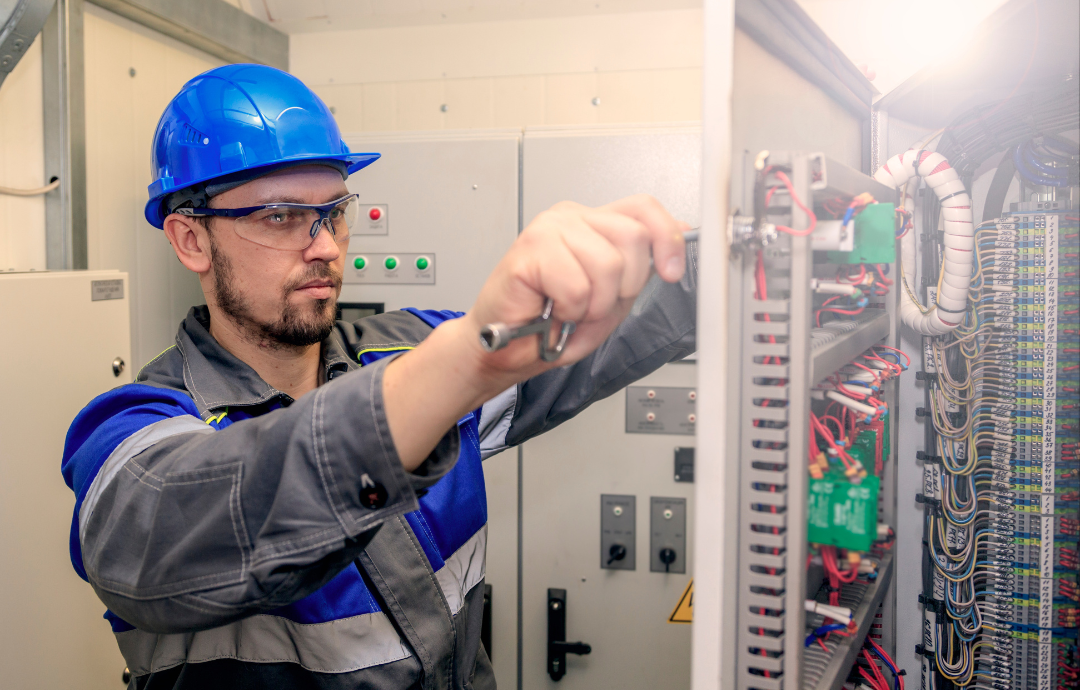Troubleshooting Common Electrical Problems: A Guide for Maintenance Teams
Electrical maintenance teams are crucial in ensuring the safe and efficient operation of electrical systems in various settings, from residential homes to industrial facilities. Troubleshooting common electrical problems is a significant part of their responsibilities. This article provides a practical guide to diagnosing and fixing typical electrical issues encountered during maintenance.
Understanding the Basics
Before diving into specific problems, it’s essential to have a solid understanding of the basic principles of electricity and the components of electrical systems. Maintenance teams should be familiar with:
- Voltage, Current, and Resistance: The fundamental electrical parameters.
- Circuit Breakers and Fuses: Devices that protect electrical circuits from overload.
- Wiring and Connections: The pathways through which electricity flows.
- Switches and Outlets: Points of control and access for electrical power.
- Grounding: A safety measure to prevent electrical shocks.
With these basics in mind, let’s explore common electrical problems and how to troubleshoot them.
1. Power Outages
Diagnosis: Power outages can be localized (affecting a single circuit) or widespread (impacting an entire building or area). Start by identifying the extent of the outage.
- Check Circuit Breakers: Inspect the main panel to see if any breakers have tripped. Tripped breakers are often the result of overloads or short circuits.
- Examine Fuses: If the system uses fuses, check for blown fuses. Replace any that are blown.
- External Factors: Determine if the outage is due to an external issue by checking with the utility company or observing if neighboring buildings are also without power.
Fix:
- Reset Breakers: If a breaker has tripped, reset it by switching it off and then back on.
- Replace Fuses: Replace any blown fuses with ones of the same rating.
- Contact Utility: If the outage is external, contact the utility company for assistance.
2. Frequent Circuit Breaker Trips
Diagnosis: Frequent tripping of circuit breakers indicates an underlying issue that needs addressing.
- Overloaded Circuit: Determine if the circuit is overloaded by adding up the power requirements of all devices on the circuit.
- Short Circuit: Inspect for short circuits caused by faulty wiring or connections.
- Ground Fault: Identify ground faults, which occur when a hot wire touches a grounded component.
Fix:
- Redistribute Loads: Move some devices to other circuits to balance the load.
- Repair Wiring: Locate and repair or replace any damaged wiring causing short circuits.
- Install Ground Fault Circuit Interrupters (GFCIs): Install GFCIs in areas prone to moisture, such as bathrooms and kitchens, to prevent ground faults.
3. Flickering Lights
Diagnosis: Flickering lights can be a sign of various issues, from simple to complex.
- Loose Bulbs: Check if the bulbs are securely screwed into the sockets.
- Faulty Fixtures: Inspect light fixtures for damage or loose wiring.
- Voltage Fluctuations: Measure voltage levels to see if there are significant fluctuations.
Fix:
- Tighten Bulbs: Ensure all bulbs are tightly screwed in.
- Repair or Replace Fixtures: Fix any damaged fixtures or replace them if necessary.
- Stabilize Voltage: If voltage fluctuations are due to issues with the electrical panel or utility supply, consult an electrician to stabilize the voltage.
4. Dead Outlets
Diagnosis: Dead outlets can be caused by various factors, including tripped breakers, damaged wiring, or defective outlets.
- Test Other Outlets: Check if other outlets on the same circuit are also dead.
- Inspect GFCIs: GFCI outlets can trip and cut power to other outlets on the same circuit. Test and reset GFCIs.
- Examine Wiring: Look for signs of damage or wear in the wiring leading to the outlet.
Fix:
- Reset Breakers: If a breaker has tripped, reset it.
- Reset GFCIs: Press the reset button on any tripped GFCI outlets.
- Replace Outlets: If an outlet is defective, replace it with a new one.
- Repair Wiring: Fix any damaged wiring that could be causing the issue.
5. Electrical Shocks
Diagnosis: Electrical shocks, even mild ones, indicate a serious issue that needs immediate attention.
- Identify Shock Sources: Determine where the shock occurred and the possible sources.
- Check Grounding: Ensure that all outlets and devices are properly grounded.
- Inspect Insulation: Examine the insulation of wires for damage or wear.
Fix:
- Improve Grounding: Ensure all electrical systems are properly grounded.
- Replace Damaged Wires: Replace any wires with damaged insulation.
- Install GFCIs: Install GFCIs in areas where shocks are more likely, such as kitchens and bathrooms.
6. Buzzing or Humming Sounds
Diagnosis: Buzzing or humming sounds often come from electrical components and can indicate an underlying issue.
- Check Fixtures and Appliances: Identify if the sound is coming from specific fixtures or appliances.
- Inspect Transformers: Transformers can emit a buzzing sound if they’re malfunctioning.
- Examine Wiring: Loose or faulty wiring can cause buzzing sounds.
Fix:
- Secure Fixtures: Tighten any loose fixtures or components.
- Replace Transformers: If a transformer is faulty, replace it.
- Repair Wiring: Fix any loose or damaged wiring.
7. High Electricity Bills
Diagnosis: An unusually high electricity bill can result from several factors.
- Energy-Hungry Devices: Identify devices that consume a lot of energy and check if they’re running more than usual.
- Faulty Appliances: Inspect appliances for faults that may cause them to use more power.
- Wiring Issues: Check for wiring problems that might lead to energy waste.
Fix:
- Use Energy-Efficient Devices: Replace old appliances with energy-efficient models.
- Fix Faulty Appliances: Repair or replace appliances that are using excessive energy.
- Inspect and Repair Wiring: Ensure the wiring is in good condition to prevent energy loss.
8. Burning Smell
Diagnosis: A burning smell is a critical warning sign of a severe electrical issue.
- Identify Source: Immediately identify the source of the smell.
- Check Outlets and Switches: Look for discolored or melted outlets and switches.
- Inspect Wiring: Examine wiring for signs of burning or damage.
Fix:
- Turn Off Power: Immediately turn off the power to the affected area.
- Replace Damaged Components: Replace any outlets, switches, or wiring that show signs of burning.
- Consult an Electrician: If the cause isn’t apparent, consult a professional electrician.
9. Inconsistent Power Supply
Diagnosis: Inconsistent power supply can cause devices to malfunction and can be hazardous.
- Measure Voltage: Use a multimeter to measure voltage consistency.
- Inspect Connections: Check for loose or corroded connections.
- Evaluate Electrical Panel: Ensure the electrical panel is functioning correctly.
Fix:
- Secure Connections: Tighten any loose connections and clean any corroded ones.
- Upgrade Panel: If the panel is outdated or faulty, consider upgrading it.
- Consult Utility Company: If the issue persists, it might be due to external factors, so contact the utility company.
10. Overloaded Circuits
Diagnosis: Overloaded circuits occur when more power is drawn than the circuit can handle.
- Identify Load: Calculate the total load on the circuit.
- Check Breaker Ratings: Ensure the circuit breaker rating matches the load requirements.
Fix:
- Redistribute Load: Move some devices to other circuits to balance the load.
- Upgrade Breakers: Install breakers with higher ratings if necessary, ensuring they comply with safety standards.
Conclusion
Effective troubleshooting of common electrical problems requires a solid understanding of electrical systems, careful diagnosis, and prompt, appropriate fixes. By following these practical guidelines, maintenance teams can ensure the safety and efficiency of electrical systems, minimizing downtime and preventing hazards. Regular training and staying updated with the latest electrical codes and technologies are also crucial for maintaining top-notch troubleshooting skills.




